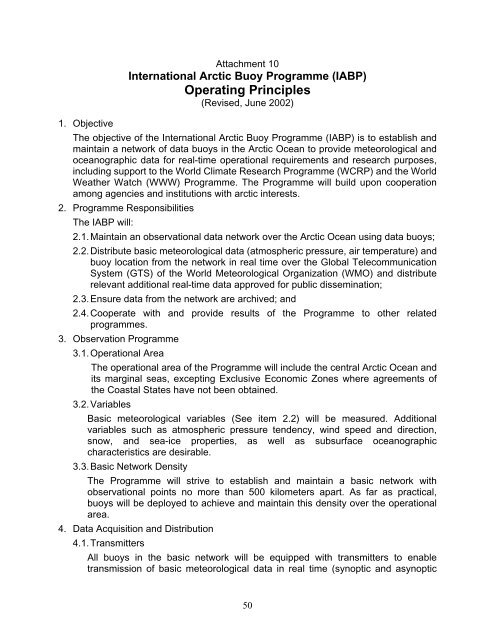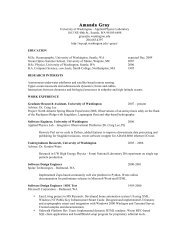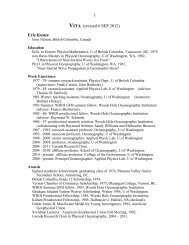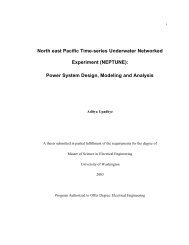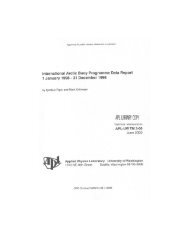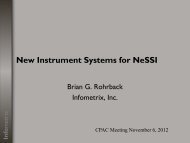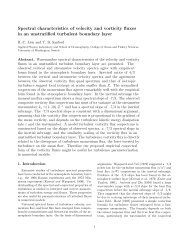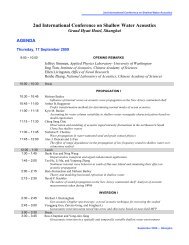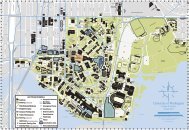International Arctic Buoy Programme (IABP) Marine Environmental ...
International Arctic Buoy Programme (IABP) Marine Environmental ...
International Arctic Buoy Programme (IABP) Marine Environmental ...
You also want an ePaper? Increase the reach of your titles
YUMPU automatically turns print PDFs into web optimized ePapers that Google loves.
1. ObjectiveAttachment 10<strong>International</strong> <strong>Arctic</strong> <strong>Buoy</strong> <strong>Programme</strong> (<strong>IABP</strong>)Operating Principles(Revised, June 2002)The objective of the <strong>International</strong> <strong>Arctic</strong> <strong>Buoy</strong> <strong>Programme</strong> (<strong>IABP</strong>) is to establish andmaintain a network of data buoys in the <strong>Arctic</strong> Ocean to provide meteorological andoceanographic data for real-time operational requirements and research purposes,including support to the World Climate Research <strong>Programme</strong> (WCRP) and the WorldWeather Watch (WWW) <strong>Programme</strong>. The <strong>Programme</strong> will build upon cooperationamong agencies and institutions with arctic interests.2. <strong>Programme</strong> ResponsibilitiesThe <strong>IABP</strong> will:2.1. Maintain an observational data network over the <strong>Arctic</strong> Ocean using data buoys;2.2. Distribute basic meteorological data (atmospheric pressure, air temperature) andbuoy location from the network in real time over the Global TelecommunicationSystem (GTS) of the World Meteorological Organization (WMO) and distributerelevant additional real-time data approved for public dissemination;2.3. Ensure data from the network are archived; and2.4. Cooperate with and provide results of the <strong>Programme</strong> to other relatedprogrammes.3. Observation <strong>Programme</strong>3.1. Operational AreaThe operational area of the <strong>Programme</strong> will include the central <strong>Arctic</strong> Ocean andits marginal seas, excepting Exclusive Economic Zones where agreements ofthe Coastal States have not been obtained.3.2. VariablesBasic meteorological variables (See item 2.2) will be measured. Additionalvariables such as atmospheric pressure tendency, wind speed and direction,snow, and sea-ice properties, as well as subsurface oceanographiccharacteristics are desirable.3.3. Basic Network DensityThe <strong>Programme</strong> will strive to establish and maintain a basic network withobservational points no more than 500 kilometers apart. As far as practical,buoys will be deployed to achieve and maintain this density over the operationalarea.4. Data Acquisition and Distribution4.1. TransmittersAll buoys in the basic network will be equipped with transmitters to enabletransmission of basic meteorological data in real time (synoptic and asynoptic50


